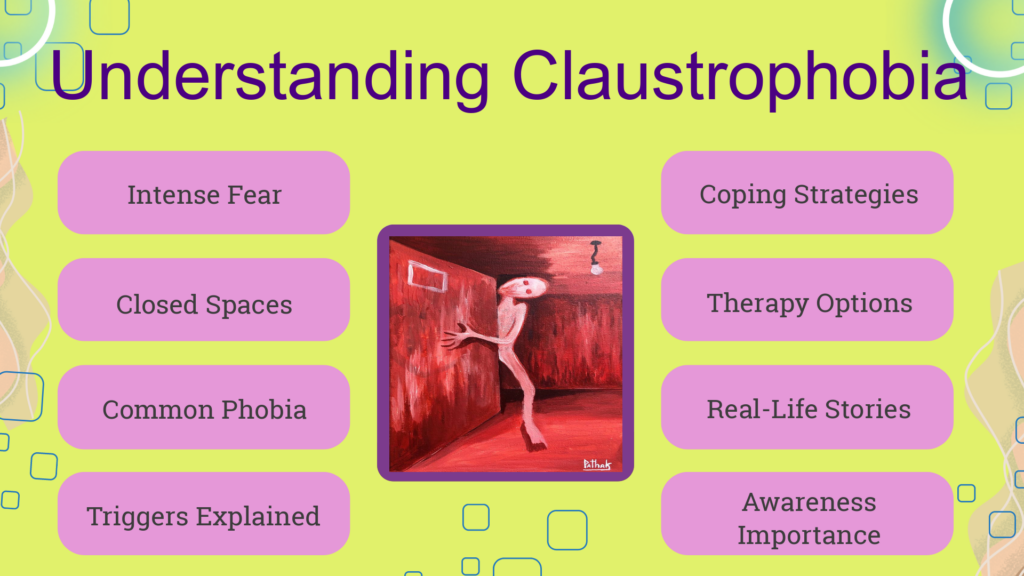Fact 1: More Common Than You Think
Many people feel uneasy in tight spots, but actual claustrophobia affects around 5–10% of the population. Surprisingly, it appears more in women than in men. Why? It could be due to differences in stress response mechanisms. Though exact reasons remain unclear, the statistics do speak volumes. For some, just thinking about being stuck can trigger anxiety. It’s essential to appreciate the widespread nature of this fear and recognize its impact on everyday life. Imagine needing to avoid elevators or crowded trains due to a racing heart and shallow breathing. This is the reality for many people living with claustrophobia.
Fact 2: Beyond Small Spaces
People often connect claustrophobia with tiny rooms or packed elevators, but it’s more varied than that. Imagine a bustling subway during rush hour or even a packed movie theater. These places can trigger feelings of discomfort, too. It’s not just the space size but the overwhelming feeling of being stuck. Movies and stories often dramatize these situations, highlighting the terror of being trapped. The media’s portrayal affects how the public perceives and understands claustrophobia. Yet, not all who fear crowded places have claustrophobia. The difference lies in the intensity of the fear and whether it disrupts daily life.
Fact 3: Acknowledged Psychiatric Condition
Claustrophobia isn’t just about feeling uneasy in tight spots. It’s a recognized condition that can cause significant distress. Those who suffer might experience panic attacks, with symptoms like sweating, rapid heartbeat, and dizziness. This goes beyond simple discomfort. Physically, the body’s alarm system overreacts, causing stress hormones to surge. Mentally, it can lead to avoidance behaviors, where sufferers stay away from spaces they deem threatening. Proper understanding and treatment are crucial. By seeing claustrophobia as a real condition, not just a quirk, we take the first step in providing the right support and help.
Fact 4: Genetic and Environmental Triggers
Why does claustrophobia occur? Genetics might offer a clue. If a family member suffers from it, you might be more likely to as well. But it’s not just about genes. Past traumatic events play a role too. Imagine getting stuck in a small dark place as a child. This can leave lasting effects. Such experiences can teach the brain to fear enclosed spaces. There are also societal factors, like movies or media, that might amplify these fears. Both nature and nurture influence the onset of claustrophobia, making each person’s experience unique.
Fact 5: Managing and Overcoming Claustrophobia
Dealing with claustrophobia can be challenging, but there are ways to manage it.
- Cognitive Behavioral Therapy (CBT): This therapy helps change negative thought patterns into more positive ones.
- Exposure Therapy: Gradual exposure to the feared situation, under professional guidance, can reduce anxiety over time.
- Mindfulness and Relaxation Techniques: Breathing exercises and meditation can help manage anxiety levels in stressful situations.
- Lifestyle Changes: Regular exercise, a healthy diet, and adequate sleep can minimize symptoms.
- Professional Help: When symptoms are overwhelming, speaking with a therapist or psychologist can provide relief and effective coping strategies.
For some, simple adjustments go a long way. Perhaps it’s planning routes that avoid packed areas or learning calming techniques to apply in moments of stress. Remember, overcoming claustrophobia is a personal journey. Supporting those with this condition involves patience, understanding, and empathy.
By becoming more aware of claustrophobia, we help create a world that feels safer and more inclusive. Understanding is the first step towards fostering environments where everyone can thrive without fear.
